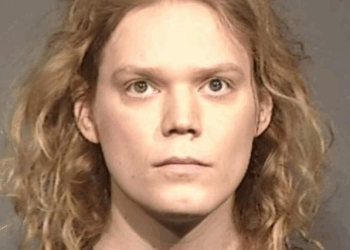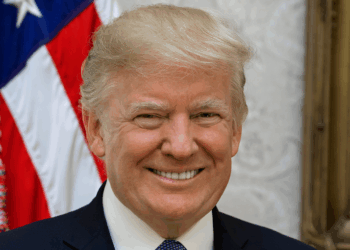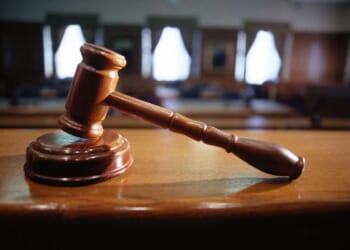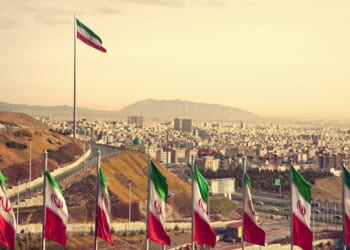The prelapsarian order enjoys a diversity of interpretations in the modern imagination. For some, it represents a prosperous symbiotic relationship between an originally vegetarian human civilization and creation: “The Lord God took the man and put him in the garden of Eden to till it and keep it” (Gen. 2:15). For others, it is an innocent, utopian vision of relationships between the sexes, men and women “naked and unashamed” before each other (Gen. 2:25).
How about a politically themed exegesis, one in which man fulfills the imago Dei through prudential governance? So posits professor of Catholic Studies at the University of Tulsa Donald S. Prudlo in Governing Perfection. “In the beginning, God administered,” Prudlo cleverly states in his introduction. The preeminent origin of the order discernible in the universe and in human nature, he argues, is the government of God.
According to Prudlo, “one of the most perfect ways for a rational creature to imitate God is through the exercise of good governance and right ordering. When humans govern, they are performing a god-like activity. When they do it well they are imaging God Himself.” Many of the leaders of the early Church into the Middle Ages subscribed to this understanding of a rightly ordered human society reflecting the imago Dei. Governing Perfection thus explores how men and women in the pre-Reformation Christian tradition sought to manifest this godly governance, balancing goodness and power through their administration of ecclesial institutions.
Though the book is an examination of governance within the Church, Prudlo explicitly aims for an application beyond religious institutions, hoping to repudiate modernity’s tendency toward political extremes, be they libertarian desires to “destroy existing institutional structures wholesale” or Marxist attempts to “abolish such bureaucracies as needless, self-perpetuating parasites.” Rather, what is needed is “a revelation of the goodness and necessity of administration that will lay bare the real problems with a bureaucratic mindset.”
Thankfully (some might argue providentially), the establishment of Rome as one of the centers of early Christianity meant that the Church was able to inherit from the Romans their impressive system of governance and its legal and administrative mechanisms. Indeed, in many respects the Catholic Church as an institution was built upon the administrative and legal genius of the Roman republic and its emphasis on gravitas (personal dignity and public temperance) and pietas (the honoring of one’s forebears). The early papacies of Damasus I, Leo I, Gelasius I, and Gregory I show how this appropriation of the Roman res publica enabled the Church to order, manage, and administer its wealth in the service of the poor, the worship of God, and the maintenance of ecclesial ministry.
Damasus (d. 384), for example, knew how to discern talent and delegate responsibility to those under him, as well as encourage the cult of the saints, especially Peter and Paul, who served as a reimagined Romulus and Remus for a new, spiritual founding of Rome under the headship of the Church. Leo (d. 461) in turn established new clerical offices (“minor orders”) with increasing degrees of responsibility. Exemplifying the virtues of dignity and discipline, he effectively met the challenges of barbarian incursions (somehow persuading Atilla the Hun to speedily exit Italy) and the collapse of imperial authority in the West.
Gelasius (d. 496) and his advisers promulgated a universal and personal law for the entire Church, with the papal see serving as the operative court for final appeals while retaining the right to initiate causes. Gelasius also comprehensively streamlined the Church’s holdings, including clerical and official salaries. His reforms were still in use in the ninth century. Finally, Gregory (d. 604) created what amounted to a bill of rights for tenants of church properties, caring for the impoverished and marginalized within papal lands. He even ordered that his instruction be read out to citizens publicly and that they be given copies of rulings so their rights would be preserved.
Monastic communities possessed not only a vibrant political character but economic ingenuity. Though of course spirituality was intended as the centerpiece of monastic life—indeed, work was intended only as an interval between periods of prayer—monasteries were also likely the first economic institutions in history to generate wealth and capital via human industry and cunning. Basil of Caesarea (d. 379) purposefully established his monasteries in the Near East near urban areas so they could both care for the poor and offer spiritual benefits to city dwellers. Basil’s monasteries became distribution centers of charity, acting as homes and schools for orphans, infirmaries, and workhouses.
In time, the wealth generated by monasteries turned them into profitable commodities and holding companies for kingly and imperial interests across Christendom. That also made them desirable targets for Viking raiders and Muslim armies. Even the great monastery of Montecassino in Italy was pillaged and its entire community murdered by Muslim forces in 883, at the same time that the fearless “Northmen” were pillaging northern Europe.
Perceiving the potential corruption that came with political attention on these religious communities, the 12th-century Bernard of Clairvaux on principle aimed to avoid such imperial tendencies. His Cistercian monasteries employed a form of subsidiarity, as abbots were made directly responsible for the oversight of new foundations. Bernard (along with his ally English monk Stephen Harding) labored to effect a decentralized system of delegated authority, with numerous religious families all descended from the great motherhouse of Cîteaux.
The Order of Preachers, or Dominicans, also exemplified a model that repudiated autocracy and even evinced an early model of separation of powers. The Dominicans vested supreme legislative powers in the hands of chapters, which had the last word and were a court of final appeal for the whole order. These chapters met on a three-year cycle, and any law had to be ratified by three consecutive chapters: The first two chapters would be so-called elective chapters wherein “diffinitors” would be elected directly by popular vote in the province, while the third chapter would be composed of the priors of the provinces themselves. This system harmonized the tension between progressive and conservative parties, and followed the Roman legal concept of “what touches all must be approved by all.” The Master General of the Order, an elected position, possessed only disciplinary and administrative authority.
One of the most fascinating examples of ecclesial attempts to repudiate autocracy in favor of a more decentralized system is found in the 11th-century papal reformers who created what Prudlo terms one of the most brilliant “legal fictions” in history. For centuries, the papacy had suffered at the hands of a handful of competing Roman families, which habituated croneyism, corruption, and even violence. Leo IX (d. 1054) creatively concocted a way to circumvent this Roman cabal.
Since members of the Roman clergy had appropriated the title cardinal as a dignity, and since cardinals were the clergy of the pope, Leo IX as pope was free to distribute these titles within the city of Rome. Leo and his successors thus decided to install prominent foreigners into the positions, effectively wresting power away from Roman families. In 1059, the papacy further developed a system whereby cardinal-bishops (originally and ostensibly a title reserved for clergy in Rome but now universally accessible across Christendom) selected the new pope, who was then confirmed by the other cardinals and the people of Rome. This principle of involving the entire community in elected leadership, says Prudlo, “undergirds all Western constitutional law.”
Of course, just because a person is holy does not guarantee he will be an effective administrator. Prudlo devotes an entire chapter to a few examples. Cyril, Patriarch of Alexandria (d. 444), sometimes leveraged his political acumen to promote the prestige of his see and other short-term political objectives, to the detriment of the broader church. Pope Celestine V (d. 1296) was praised for his humility and saintliness—even acknowledging that he was an incompetent pope—but censured for his imprudence and obliviousness. He installed unworthy candidates in important positions and allowed corrupt curialists to act as they wished. A rare example of a pope who resigned, his legacy is perhaps best summarized by observing that there has never been a Pope Celestine VI.
Prudlo closes by observing that the best church leaders were those who acknowledged that their authority “was borne by their humility, and their administration was their service to their fellow believers.” They followed Christ’s exhortation to be “as prudent as serpents, and as innocent as doves” (Matt. 10:16). St. Ambrose, bishop of Milan, for example, united sanctity and prudential leadership in his attempts to reconcile Arians and Catholics as well as negotiate with officials of the late Roman Empire. Many commended the efficient and ethical governance of his diocese, treating the poor of Milan as full and integral members of the Church. His De Officiis, though a treatise for Christian clergy on virtue and order, is undeniably Ciceronian in character and thus an exemplar of the Church’s appropriation of Roman political and legal habits.
To effectively govern, one must first govern oneself. This Aristotelian concept was central to the growth of the Catholic Church from the early centuries into the medieval era, with ecclesial leaders of Rome and their allies across Christendom “baptizing” Roman institutions of law, administration, and politics. In doing so, they nurtured a model of administrative governance that was both traditional and evolutionary, while, in Prudlo’s words, “avoiding all revolutionary sentiment.” In that respect, we today who seek to foster (and recover) a true republican form of government that is faithful to the very best of Western civilization can, in many senses, claim the early leaders of the Church as our political forebears.




![Hegseth Demands Fitness Requirements, Says 'Fat Troops' 'Not Who We Are' [WATCH]](https://teamredvictory.com/wp-content/uploads/2025/09/Hegseth-Demands-Fitness-Requirements-Says-Fat-Troops-Not-Who-We-350x250.jpg)






